 1866 - 1944
abstract expressionism
1866 - 1944
abstract expressionism
Description Wassily Kandinsky
Wassily Kandinsky, born in Moscow in 1866, embarked on a profound odyssey that would redefine the very essence of art. His journey unfolded against the backdrop of transformative periods in both art and history.
Initially pursuing a career in law and economics, Kandinsky's life took a seismic shift upon encountering a painting by Monet. The emotional impact of this momentous encounter propelled him into the world of art. Kandinsky's path, however, was not conventional; his artistic epiphany came later in life.
The turning point arrived during a visit to an exhibition of French Impressionists. Face to face with Monet's "Haystacks," he was overcome by a sensation he later described as "seeing with his soul." This synesthetic experience, where color and form evoked emotional responses, became the compass for his artistic exploration.
Kandinsky's journey was marked by an intellectual and spiritual quest. Theosophy, mysticism, and his belief in the transformative power of art converged in a singular vision. This vision birthed "Concerning the Spiritual in Art," a seminal treatise where he laid the groundwork for abstract art, asserting that color and form could convey spiritual truths.
His painting "Composition VI," often considered a visual symphony of color and form, marked the inception of non-representational art. The canvas became a realm where emotions and spirituality transcended the constraints of recognizable objects.
As a key figure in the Blue Rider group, alongside Franz Marc and others, Kandinsky championed the expressive potential of color. His works, such as "Improvisation 28" and "Yellow-Red-Blue," were visual orchestrations that resonated with an inner harmony.
Political upheavals in Russia forced Kandinsky to leave, and he found refuge in Germany. The Bauhaus, a progressive art school, became a sanctuary for his ideas. Here, he explored the intersection of art and technology, contributing to the school's legacy as a crucible for modernist experimentation.
However, the rise of the Nazi regime led to the closure of the Bauhaus, and Kandinsky, facing persecution, sought sanctuary in France. The tumultuous journey from Moscow to Munich, then to the Bauhaus, and finally to Paris mirrored the broader upheavals of the 20th century.
Wassily Kandinsky's life concluded in 1944, but his legacy as a pioneer of abstraction endured. His vision of art as a spiritual journey, transcending the material world, resonated with subsequent generations. Kandinsky's canvases, pulsating with vibrant hues and geometric forms, remain portals to a realm where art transcends representation to become a language of the soul.
Gallery
Paintings Wassily Kandinsky
Quotes
Color is the keyboard, the eyes are the harmonies, the soul is the piano with many strings.
Every work of art is the child of its age and, in many cases, the mother of our emotions.
Abstract art places a new world, which on the surface has nothing to do with 'reality,' next to the 'real' world.
The more frightening the world becomes, the more art becomes abstract.
To create a work of art is to create the world.

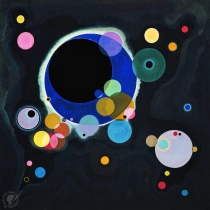

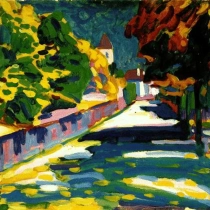
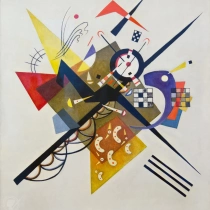
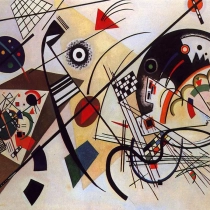
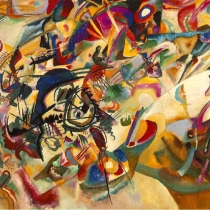

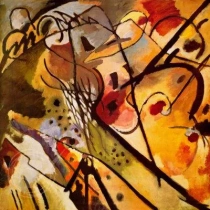

No Comments Yet...